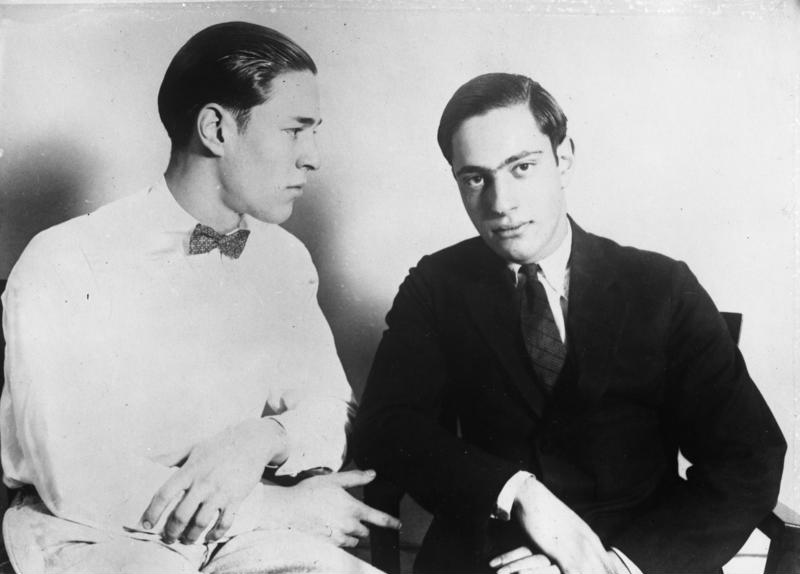OPINION
One of the most persistent tropes in fiction, from Sherlock Holmes to superheroes, is the ‘criminal genius’. In real life, though, criminals are almost always far from geniuses. If they were that smart, they’d find legal ways to make buckets of money.
And geniuses often make pretty lousy criminals.
That was certainly the case for Leopold and Loeb, the infamous “thrill killers” of the 1920s.
In 1924, Nathan Leopold was a 19-year-old prodigy with a promising future ahead of him. He had a degree from the University of Chicago, spoke 10 languages, and was a nationally recognized bird expert.
Richard Loeb wasn’t far behind him. He entered University High School at 12, and completed his high school education in two years. He become the University of Michigan’s youngest graduate in 1923, aged 17. While Leopold was a classic ‘intellectual’ type, with a claimed IQ of 200, Loeb was a tennis-playing socialiser with a passion for detective stories.
After graduating from Michigan, Loeb went on to study at the University of Chicago, alongside Leopold. Though they had known each other casually for years, it was at Chicago that the two brilliant, arrogant, narcissistic young men became lovers – and planned what they believed would the “perfect crime”.
Leopold in particular was fascinated with the philosophy of Friedrich Nietzsche and his idea of a “Superman”, someone whose superior intellect allowed them to transcend human law. “A thirst for knowledge is highly commendable,” Leopold later boasted. “No matter what extreme pain or injury it may inflict upon others.”
Thus believing that they were above the rules of ordinary humans, the two tried their hands at petty crimes: burglary and arson. But they were apparently miffed that these crimes didn’t attract much notoriety. So they began planning the “perfect” murder.
The pair spent that winter [1923] plotting out the crime, and on May 21, 1924, they set it into action. They drove around Kenwood looking for a victim until they spotted 14-year-old Bobby Franks. Franks was Loeb’s cousin and his father was a wealthy watchmaker.
Leopold and Loeb first lured the boy into their car by telling him they wanted to discuss tennis rackets. While Leopold drove the car, Loeb attacked the young teen in the back seat. He struck Franks over the head with a chisel before suffocating him with a rag.
Leopold then drove the car to Hammond, Indiana, where the duo stripped Franks, poured acid on his body, and concealed the corpse in a culvert.
By the time they returned to Chicago, Franks’ parents were raising alarm bells about their son’s disappearance. That same day, Leopold dropped a letter in a random post box demanding a $10,000 ransom for Franks’ return – even though he was already dead.
But the body had already been found.
And within a week, the “perfect” crime fell apart when police arrested the pair. Despite their arrogance, a succession of simple mistakes led to their swift arrest.
First, [police] discovered a pair of prescription glasses. The glasses featured a unique hinge that only three people in Chicago wore – and one of them was Nathan Leopold. Police also found the destroyed typewriter used to write the ransom note in a nearby lake and traced it back to the fraternity house Loeb and Leopold had stolen it from.
The pair’s conceit also gave them away. They just couldn’t help avidly chatting and joking about the crime with family and friends. When asked by a detective to describe Franks, Loeb replied that, “If I were to murder anybody, it would be just such a cocky little son of a bitch as Bobby Franks”.
And when brought in for questioning, the two immediately ran afoul of the Prisoner’s Dilemma: confessing and trying to each blame the other.
The crime quickly became a media sensation, and when the trial began on July 21, 1924, it completely took over the public spotlight.
Leopold and Loeb hired famed defense attorney Clarence Darrow to represent them. Both men pleaded guilty to the crime immediately, so the trial was only meant to determine whether they should be sentenced to death or not […]
Ultimately, the judge ruled that Leopold and Loeb were too young for the death penalty. Instead, the judge sentenced both of them to life in prison plus an additional 99 years for the kidnapping.
All That’s Interesting
And so the “perfect crime” quickly put the two young geniuses behind bars. For Leopold, it wasn’t quite Life Plus 99 Years, as he titled his memoirs. Leopold was paroled in 1958. He moved to Puerto Rico, married, earned a master’s degree, and taught at the University of Puerto Rico. Quite the comedown for someone so assured of his own genius.
Loeb was not so lucky: he was fatally stabbed in the prison showers in 1936. The stabbing was allegedly the result of a failed homosexual proposition, though who supposedly propositioned whom has never been established.
Nathan Leopold died in Puerto Rico in 1971, aged 66.
If only Bobby Franks had had such luck.

